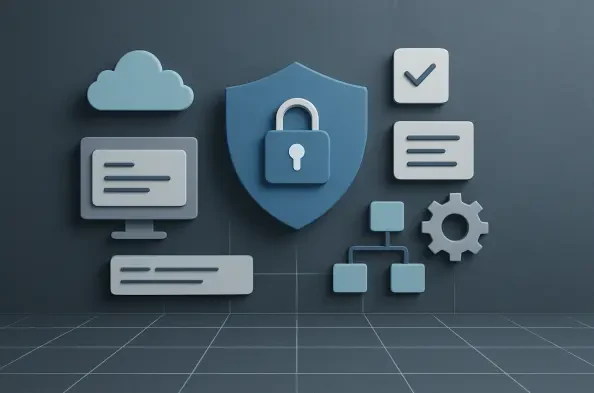Addressing the Rising Threat in SaaS Environments
Imagine a multinational corporation managing dozens of Software as a Service (SaaS) applications, each hosting sensitive data and critical operations, only to discover a major breach due to a simple misconfiguration in one platform. This scenario is far from hypothetical, as studies reveal that over 60% of data breaches in cloud environments stem from user errors or inconsistent security settings. The Cloud Security Alliance (CSA), a globally recognized authority in cloud security best practices, has stepped in to tackle this pressing challenge with the introduction of the SaaS Security Capability Framework (SSCF). This initiative aims to standardize security controls, easing the burden on organizations navigating the complex landscape of SaaS security.
The rapid adoption of SaaS solutions offers undeniable benefits like scalability and cost-efficiency, but it also exposes businesses to significant risks. Unlike traditional on-premises systems, SaaS operates under a shared responsibility model, where providers secure the infrastructure, and customers must safeguard their data and configurations. Without uniform guidelines, this division often leads to vulnerabilities. The SSCF provides a structured approach to bridge these gaps, ensuring that both parties can fulfill their roles effectively while minimizing exposure to cyber threats.
This guide explores the critical importance of standardized SaaS security practices, delves into the core components of the framework, and evaluates its impact on various stakeholders. By outlining actionable steps and real-world applications, the focus remains on how this framework simplifies protection in an era where digital reliance continues to grow. The goal is to equip organizations with the knowledge needed to adopt robust security measures seamlessly.
Why Standardized SaaS Security Practices Matter
The SaaS landscape is marked by a vast array of provider offerings, each with distinct security configurations and customer expectations. This diversity, while innovative, often results in fragmented security practices that leave organizations struggling to maintain consistency across platforms. Without a unified standard, businesses face heightened risks of misconfigurations, overlooked vulnerabilities, and ultimately, costly cyberattacks that exploit these gaps.
Standardization through the SSCF addresses these challenges by creating a common language for security across SaaS environments. It reduces the complexity for customers managing multiple applications by offering clear, consistent controls that apply regardless of the provider. This uniformity not only streamlines security efforts but also fosters trust, as customers can rely on predictable safeguards, while providers gain credibility by aligning with recognized best practices.
Moreover, adopting standardized practices brings tangible benefits, especially for smaller SaaS vendors. Compliance with a framework like SSCF eliminates the need to develop custom security solutions for each client, saving resources and enabling focus on core services. For enterprise customers, it strengthens their security posture, while for providers, it offers a competitive edge in a market where trust is paramount. This collective advantage underscores the necessity of a cohesive approach to SaaS protection.
Core Components of the SaaS Security Capability Framework
The SSCF is designed as a comprehensive tool, structured around six primary security domains that align with CSA’s established conventions. These domains address critical aspects of SaaS security, providing a roadmap for both customers and providers to navigate their responsibilities under the shared responsibility model. The framework emphasizes customer-facing controls, empowering users to manage security settings directly while ensuring providers maintain their obligations.
By breaking down security into actionable components, the SSCF simplifies implementation across diverse platforms. Each domain includes specific controls tailored to mitigate common risks, from data breaches to unauthorized access. This structured approach ensures that customers can apply consistent measures, regardless of the SaaS application in use, while preserving the balance of duties between themselves and their providers.
The framework’s adaptability makes it suitable for organizations of all sizes, offering clarity on how to secure SaaS environments effectively. Below, two key domains are explored in detail to illustrate how the SSCF translates into practical security measures. These insights highlight the framework’s role in transforming complex challenges into manageable solutions.
Domain 1 – Data Protection Controls for Enhanced Safety
Data protection stands as a cornerstone of SaaS security, given the sensitive nature of information stored and processed in these environments. The SSCF addresses this through targeted controls designed to safeguard data from unauthorized access and breaches. These measures focus on configurable settings that customers can adjust to align with their specific security needs, ensuring robust defense against evolving threats.
One critical control within this domain involves blocking malicious uploads, a common vector for malware and other harmful content. Implementation steps include configuring application settings to scan and filter uploads, preventing potentially dangerous files from entering the system. Additionally, encryption and access restrictions play a vital role in protecting data at rest and in transit, forming a multi-layered shield against breaches.
The significance of these controls cannot be overstated, as they directly impact an organization’s ability to maintain data integrity. By proactively addressing upload risks and securing data storage, businesses can prevent costly incidents that damage reputation and finances. This domain of the SSCF equips customers with the tools to take charge of their data security with confidence.
Real-World Example: Preventing Data Breaches with Upload Blocking
Consider a scenario where a financial services firm utilizes a SaaS platform for client document sharing. Without proper controls, a malicious file uploaded by an unsuspecting user could infiltrate the system, compromising sensitive records. By leveraging the SSCF’s data protection controls to block such uploads through automated scanning, the firm successfully averts a potential breach, safeguarding both its data and client trust.
Domain 2 – Identity and Access Management for User Visibility
Ensuring secure user interactions with SaaS platforms is another critical focus of the SSCF, addressed through the domain of identity and access management (IAM). This area emphasizes controls that provide visibility into who accesses the system and what permissions they hold. Such transparency is essential for detecting and preventing unauthorized access, a frequent entry point for cyber threats.
Practical implementation of IAM controls includes setting up detailed logs and dashboards to monitor user activity across SaaS applications. Customers can configure alerts for suspicious behavior, such as multiple failed login attempts or access from unusual locations. These measures enable rapid response to potential security incidents, minimizing the window of opportunity for attackers to exploit weaknesses.
By prioritizing user visibility, this domain empowers organizations to maintain strict oversight of access privileges, ensuring that only authorized individuals interact with critical systems. The SSCF’s guidance in this area helps bridge a common gap in SaaS security, where unclear access policies often lead to vulnerabilities. Adopting these controls strengthens overall protection in a shared responsibility environment.
Case Study: Streamlining Access Control in a Multi-SaaS Environment
Picture a tech company managing several SaaS tools for collaboration, project management, and data storage. Initially, inconsistent access policies across platforms led to undetected unauthorized logins. By applying the SSCF’s IAM controls to gain visibility into user permissions, the company identified and revoked unnecessary access rights, effectively mitigating risks and securing its digital ecosystem.
Evaluating the Impact and Future of the SSCF
The introduction of the SSCF marks a transformative shift in how SaaS security is approached, moving from a fragmented, risk-prone landscape to a unified, trust-driven ecosystem. By standardizing customer-facing controls across six key domains, it addresses the inherent complexities of the shared responsibility model. This framework not only reduces the burden on customers but also elevates the security standards that providers must meet, fostering collaboration across the board.
Enterprise customers with extensive SaaS portfolios stand to gain significantly, as the framework simplifies security management and enhances protection. Smaller vendors benefit from streamlined compliance processes, allowing them to allocate resources more efficiently. Providers, meanwhile, can leverage SSCF alignment as a market differentiator, attracting security-conscious clients in a competitive space. Assessing current security gaps and ensuring provider compliance with the framework are crucial steps before adoption, as is aligning with Zero Trust principles for sustained resilience.
Looking ahead, the SSCF holds immense potential to redefine SaaS security by keeping pace with modern standards and customer expectations. Its structured approach ensures that as threats evolve, so too do the defenses. Organizations are encouraged to integrate this framework into their security strategies, recognizing its role in creating a safer digital environment for all stakeholders involved.
Reflecting on a Path Forward
Looking back, the rollout of the SSCF proved to be a pivotal moment in addressing the intricate security challenges within SaaS environments. It offered a clear, standardized pathway that empowered organizations to protect their data and operations with greater ease. The framework’s focus on actionable controls across critical domains provided a foundation for trust and efficiency that many had struggled to achieve prior to its implementation.
As a next step, businesses were urged to conduct thorough assessments of their existing SaaS security postures, identifying areas where the SSCF could fill gaps. Partnering with providers committed to framework compliance became a priority, ensuring a seamless integration of best practices. Additionally, embedding Zero Trust methodologies alongside the SSCF offered a forward-thinking approach to anticipate and counter emerging threats.
Beyond immediate adoption, the broader consideration was how such standardization could inspire further innovation in cloud security. Stakeholders were encouraged to view the framework not as a static solution but as a stepping stone for continuous improvement. Engaging with industry peers and CSA resources to refine and expand upon these practices emerged as a vital strategy for sustaining long-term protection in an ever-changing digital landscape.






